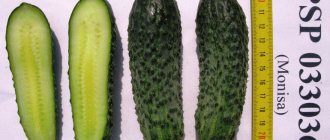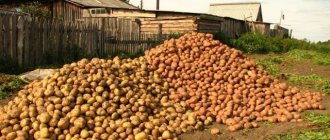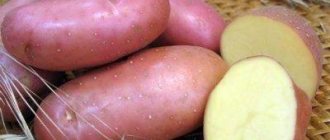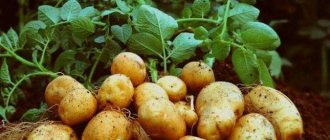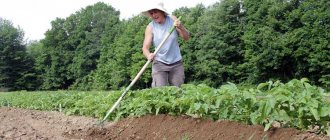The history of the origin of the potato variety "Minerva"
This potato variety was bred by Dutch breeders and entered into the State Register of Russia. Most climate zones and countries are suitable for its cultivation. Planting dates may vary depending on weather conditions.
The table presents data on starch content in different varieties:
| Name | Variety | % |
| Nikulinsky | Late ripening | From 12 to 21 |
| Cardinal | Late ripening | 15 |
| Rocco | Late ripening | 16 |
| Ivan da Marya | Late ripening | From 8 to 14 |
| Asterix | Late ripening | 17 |
| Borovichok | Early ripening | From 13 to 17 |
| Elmundo | Early ripening | From 11 to 14 |
| Felox | Early ripening | 16-17 |
| Bellarosa | Early ripening | 12 to 16 |
| Natasha | Early ripening | From 12 to 14 |
| Forty days | Extra early | From 11 to 15 |
| Karatop | Extra early | From 10.5 to 15 |
| Riviera | Extra early | 19,6 |
| Zhukovsky early | Extra early | From 10 to 12 |
| Farmer | Extra early | 12 |
| Crane | Mid-late | 14-19 |
| Sorcerer | Mid-late | From 12 to 15 |
| Mozart | Mid-late | No more than 20 |
| Grenada | Mid-late | From 10 to 17 |
| Melody | Mid-late | From 11 to 17 |
| Yanka | Mid-early | 14,8-15,4 |
| Giant | Mid-early | 16-19 |
| Tuscany | Mid-early | From 12 to 14 |
| Purple Haze | Mid-early | 14,4-17,2 |
| Openwork | Mid-early | From 14 to 16 |
Description of the variety
Roots:
- The tubers are large in size, weighing from 120 to 245 grams;
- They have a round or round-oval shape;
- The peel is cream-colored, plain, thin, smooth;
- Small, almost invisible eyes, lying superficially;
- The pulp is white;
- Starch content ranges from 14.7 to 15.9%;
- Contains a large amount of protein, microelements and vitamins.
Escapes:
- The bush is compact, erect, not too branched;
- Has moderate green mass;
- The middle leaves are dark green, the edges are slightly wavy;
- The corolla is compact;
- The flowers are large, white, fall quickly, and do not set berries.
Work on planting potatoes of the "Minerva" variety
Business plan
Carrying out work on planting potatoes of the "Minerva" variety
Summary
This business plan has been developed to determine the economic efficiency of growing Minerva potatoes by a farm.
The data for drawing up this business plan is taken from the following sources:
- according to 2009 data
— information on prices for fertilizers and herbicides based on the price lists of the newspaper “Business”
— cost of seedlings upon purchase in the fall of 2009
The objectives of this business plan are:
— elaboration of one of the options for doing business as a farmer
— determination of the economic efficiency of planting potatoes of the “Minerva” variety for sale in the Melitopol district of Zaporozhye region.
— production and sales planning
This business plan contains the following sections:
- Enterprise valuation
- Product evaluation
- Market assessment
- Competitor assessment
- Marketing strategy
- Production plan
- Financial plan
- Enterprise valuation
The farm is located in the Melitopol district of the Zaporozhye region. Number of people (co-owners) 4 people. Equipment available to the farm: MTZ-82 tractor, PLN 3-35 plow, KRN 4.2 cultivator, 4-row potato planter. The amount of land used for planting 1 hectare.
- Product Rating
Potato variety “Minerva” is an ultra-early variety that can produce two harvests per season. Ripening period is 38-42 days. This ultra-early variety forms tubers from the very beginning of growth, when there is sufficient moisture in the soil. In addition, it manages to form a harvest in time for a massive outbreak of late blight and other diseases. The bushes are well developed, the tubers are round-oval in shape, clear yellowish in color, the flesh is white; when planted early, it provides 2 harvests per year. Productivity with two plantings is 237 c/ha, with one planting 430 c/ha. The farm described here produces one planting per year.
The tubers are large, starch content 17%, taste 4.8 (on a 5-point scale).
- Market assessment
The sales market for this potato variety is possible throughout Ukraine, since the variety is popular and, in terms of its taste and average tuber size, exceeds such varieties as “Nevskaya”, “Belorosa”, “Sineglazka”, “Gollandskaya Red”.
The area of Melitopol is offered for sale, as it does not require costs for the export of products (fuel costs, car depreciation, driver pay)
- Competitor assessment
To assess the competitiveness of the “Minerva” variety, a comparative table is proposed (Table 1).
Table 1
VarietyRipening timeTuber sizeYield, kg/tPrice per 1 kg, UAHTasteQualityStarch
%Minerva Extra earlyLarge tuberous4302,204,817NevskayaMid earlyMedium non-tuberous4002,00412,1BelorosaExtra earlyLarge tuberous4303,00514,6SineglazkaMid earlyMedium non-tuberous4802,30515,1Chervona rueMid ripeningMedium club Nevaya5202,304,719,5
As can be seen from the table, the “Minerva” variety is superior in taste to such varieties as “Nevskaya” and “Chervona Ruta”; and is inferior to such as “Belorosa” and “Sineglazka”, however, the cost of the “Belorosa” variety and the mid-earliness of “Sineglazka” give the “Minerva” variety advantages over them.
Considering the cost and yield, the Minerva variety is also the most preferred for cultivation.
The varieties “Sineglazka” and “Chervona Ruta” give a higher yield, but the variety “Sineglazka” is traditional in the Zaporozhye region, therefore, greater competition is likely, and the variety “Chervona Ruta” is mid-season, which is also not suitable for growing for sale.
- Marketing strategy
This business plan proposes a focusing strategy, which is based on choosing a narrow area of competition within a particular area of activity. A company choosing a focus strategy selects a specific market segment and directs its activities to serve exclusively this segment or segments. By optimizing its strategy accordingly in market segments, the company tries to gain certain competitive advantages in this particular segment, although it may not have general competitive advantages within the entire industry.
This strategy is based on those characteristics that distinguish the selected target segment from other segments in the given area.
The focusing strategy is relevant, since the “Minerva” variety is in demand, seedlings are not common in the area, so there is little presence on the market, which makes it possible to set a higher price compared to other varieties, and the price will also be determined by the size of the tubers, which in the presented variety is higher than other varieties.
- Production plan
The production plan includes the following types of work:
- purchase of seedlings
- plowing the land
- cultivation
- sowing
- watering
- collection, storage
- sales
Since the herbicide “Zinkor” is used during planting, such type of work as weeding is not provided.
Purchase of seedlings
Potato seedlings were purchased in October 2009 at a price of 2.20 UAH. for 1 kg.
The number of seedlings is calculated as follows:
1 row = 100 m.
Number of seedlings per row (100 m) = 20 kg.
Row width = 60 cm
Thus, the number of rows 100 m wide in one hectare:
100 / 0,6 = 166
Amount of planting material:
166*20 = 3320 kg.
The cost of seedlings was 7304.00 UAH.
Since the seedlings were purchased in the Poltava region, the cost of delivering planting material by road was:
One way travel = 430 km.
The cost of fuel (diesel) was 4.80 UAH. / liter
Fuel consumption of a GAZ car is 15 liters / 100 km
Total shipping cost:
430 * 2 * 0.15 * 4.80 = 619.20 UAH.
Car depreciation is 0.00 UAH.
Thus, the total cost of planting material including delivery was 7304.00 + 619.20 = 7923.20 UAH.
Plowing
Plowing is done in the fall.
For plowing, an MTZ-82 tractor and a PLN 3-35 plow are used.
Fuel consumption for the MTZ-82 tractor when plowing is 20 liters/hour.
The working time for plowing 1 hectare of field is 1 hour.
Thus, the fuel consumption for plowing will be 20 * 1 = 20 liters.
The cost of 1 liter of solarium is 4.80 UAH.
The cost of fuel for plowing 1 hectare of field will be 20 * 4.80 = 96 UAH.
Tractor depreciation is 0.00 UAH.
When plowing, the following fertilizers are plowed into the ground:
- manure in the amount of 50 tons / ha
- nitroamophos K in the amount of 300 kg/ha
The cost of manure is 80 UAH / ton
The cost of manure required to cultivate 1 hectare of soil will be 50 * 80 = 4000 UAH.
The cost of nitroammophos K is 3400 UAH/t
The cost of nitroammophos K fertilizer for processing 1 hectare will be 3400 * 0.3 = 1020 UAH.
The total cost of fertilizers required for plowing is 5020 UAH.
Thus, the cost of plowing the field will be:
96 + 4000 + 1020 = 5116 UAH
Cultivation
Cultivation of the land is carried out using the MTZ-82 tractor and the KRN 4.2 cultivator
Fuel consumption for the MTZ-82 tractor during cultivation is 10 l/hour
The tractor operating time during cultivation is 30 minutes, or 0.5 hours
The cost of 1 liter of solarium is 7.50 UAH.
The cost of fuel for cultivating 1 hectare of field will be:
10 * 0.5 * 7.50 = 37.50 UAH.
Tractor depreciation 0.00 UAH.
During cultivation, the following fertilizers are plowed into the ground:
- nitroamophos K in the amount of 100 kg/ha
The cost of nitroamophos K is 3400 * 0.1 = 340 UAH.
During cultivation, herbicides such as “Zenkor” are introduced into the ground.
The amount of herbicide required to treat 1 hectare of field is 1 kg.
The cost of the herbicide is 700 UAH/kg
Thus, the cost of treating the field with herbicide will be 700 UAH.
Thus, the cost of cultivating the field will be:
37.50 +340+ 700 = 1077.50 UAH.
Landing
When planting, a TMZ-82 tractor and a 4-row potato planter are used.
A tractor plants 1 hectare of field in 2 hours.
The fuel consumption rate when the tractor is operating on landing is 10 l/hour.
The planned cost of 1 liter of solarium is 7.50 UAH.
Thus, the cost of fuel upon landing will be 10 * 7.5 * 2 = 150 UAH.
Thus, the cost of planting will be: 150 = 150 UAH
Watering
For irrigation, a “Fregat” type sprinkler is used, with a throughput capacity of 25 m3/hour.
Watering is done 4-5 times, watering time is 24 hours per day.
Advantages and disadvantages
The main advantages are:
- Excellent taste;
- Potatoes ripen early and quickly;
- High yield;
- Excellent keeping quality;
- Rapid accumulation of marketable mass by tubers;
- Resistant to temperature changes and lack of moisture;
- Immune to most diseases.
A small drawback typical of very early varieties is that the taste is not too bright.
Productivity is determined by climatic conditions and soil fertility.
Peculiarities
Characteristic features of the “Minerva” variety:
- Potatoes are an extra-early table variety. Tubers are characterized by rapid weight gain. The first harvest is possible within 35 days after germination. Fertile soils allow you to harvest the first harvest of up to 230 centners per hectare. By the end of the growing season (45-50 days), the maximum yield is achieved - up to 430 centners per hectare;
- The harvested crop is well stored, without loss of commercial properties. Can be transported;
- In the southern regions, you can get two potato crops per season;
- This variety is suitable for cultivation on farms and in private plots;
- Potatoes can be propagated by seeds.
REFERENCE: Germination is average, in the first season the yield is significantly lower, but in the second year a harvest with larger root crops is obtained.
Correct fit
Basic landing rules:
- Large tubers weighing at least 80 grams are preferred as seed material. In unfavorable weather conditions, they will provide the plants with a sufficient supply of nutrients;
- For active growth, the tubers are heated in warm water, and then treated with a growth stimulator. Disinsection of the seed is carried out by generously spraying with an aqueous solution of fungicide. The processed tubers must be thoroughly dried so that all components are completely absorbed. Afterwards, the tubers are germinated in the light. As soon as strong white sprouts appear, reaching two centimeters, the tubers are ready for planting;
- Potatoes should be planted in well-warmed soil, the temperature of which should be above 10ºC;
- The tubers are placed in rows, placed in holes previously fertilized with humus and wood ash;
- Standard planting scheme: distance between bushes from 30 to 35 cm, row spacing of at least 60 cm. Tubers are planted to a depth of 10 cm.
The most delicious potato varieties:
Characteristics, description, yield, reviews and photos of the Minerva potato variety.
Growing very early potato varieties provides a harvest in mid-summer and allows you to enjoy the taste of young root crops. Among the variety of varieties offered by breeders, the variety “Minerva” is especially popular among gardeners.
Popular potato varieties:
This potato variety was bred by Dutch breeders and entered into the State Register of Russia. Most climate zones and countries are suitable for its cultivation. Planting dates may vary depending on weather conditions.
Roots:
- The tubers are large in size, weighing from 120 to 245 grams;
- They have a round or round-oval shape;
- The peel is cream-colored, plain, thin, smooth;
- Small, almost invisible eyes, lying superficially;
- The pulp is white;
- Starch content ranges from 14.7 to 15.9%;
- Contains a large amount of protein, microelements and vitamins.
Escapes:
- The bush is compact, erect, not too branched;
- Has moderate green mass;
- The middle leaves are dark green, the edges are slightly wavy;
- The corolla is compact;
- The flowers are large, white, fall quickly, and do not set berries.
Advantages and disadvantages
The main advantages are:
- Excellent taste;
- Potatoes ripen early and quickly;
- High yield;
- Excellent keeping quality;
- Rapid accumulation of marketable mass by tubers;
- Resistant to temperature changes and lack of moisture;
- Immune to most diseases.
A small drawback typical of very early varieties is that the taste is not too bright.
Productivity is determined by climatic conditions and soil fertility.
Peculiarities
Characteristic features of the “Minerva” variety:
- Potatoes are an extra-early table variety. Tubers are characterized by rapid weight gain. The first harvest is possible within 35 days after germination. Fertile soils allow you to harvest the first harvest of up to 230 centners per hectare. By the end of the growing season (45-50 days), the maximum yield is achieved - up to 430 centners per hectare;
- The harvested crop is well stored, without loss of commercial properties. Can be transported;
- In the southern regions, you can get two potato crops per season;
- This variety is suitable for cultivation on farms and in private plots;
- Potatoes can be propagated by seeds.
REFERENCE: Germination is average, in the first season the yield is significantly lower, but in the second year a harvest with larger root crops is obtained.
Basic landing rules:
- Large tubers weighing at least 80 grams are preferred as seed material. In unfavorable weather conditions, they will provide the plants with a sufficient supply of nutrients;
- For active growth, the tubers are heated in warm water, and then treated with a growth stimulator. Disinsection of the seed is carried out by generously spraying with an aqueous solution of fungicide. The processed tubers must be thoroughly dried so that all components are completely absorbed. Afterwards, the tubers are germinated in the light. As soon as strong white sprouts appear, reaching two centimeters, the tubers are ready for planting;
- Potatoes should be planted in well-warmed soil, the temperature of which should be above 10ºC;
- The tubers are placed in rows, placed in holes previously fertilized with humus and wood ash;
- Standard planting scheme: distance between bushes from 30 to 35 cm, row spacing of at least 60 cm. Tubers are planted to a depth of 10 cm.
The most delicious potato varieties:
Care
How to care:
- This variety prefers fertile soil based on black soil or sand. To increase the nutritional value of the soil, peat, manure, and humus are added;
- During the season, fertilize with complex fertilizer;
- Potatoes require moderate moisture; a long dry period contributes to a significant reduction in yield.
REFERENCE: To get maximum yield, install a drip irrigation system.
- Hill up the bushes 1-2 times, forming high ridges;
- To get rid of weeds, the row spacing is mulched with mowed grass, straw or peat. Mulching will also help the soil not dry out.
Potatoes "Minerva" are resistant to dangerous nightshade diseases. Such as:
- Potato cancer;
- Various viruses;
- Golden cyst nematode;
- Common scab.
Early ripening helps protect plantings from late blight. With the help of dosed watering and mulching the soil, you can protect plants from the stem.
Young greens are attractive to various insects: Colorado potato beetles, thrips, aphids. As a preventive measure, bushes are sprayed with insecticides; the use of toxic drugs is recommended before mass flowering begins. Periodic weeding and changing planting beds are excellent protection against insect larvae.
Harvesting
Cutting the tops a week before harvest helps to quickly gain marketable weight. The harvested crop needs to be thoroughly dried at the edge or under a canopy. Afterwards it is sorted and stored in a cool, dark place.
Reviews about the variety
Potato tubers have a pleasant, delicate taste. Due to their moderate starch content, they do not darken or boil over, maintaining their white color in cooked dishes. The "Minerva" variety is suitable for frying, boiling, stuffing and baking, for preparing delicious low-calorie puree. Potatoes are used for industrial purposes: for frozen French fries, vegetable mixtures, soup dressings.
REFERENCE: Seed material is stored separately.
Growing potatoes of the Minerva variety is not difficult; the necessary care contributes to the rapid and smooth ripening of the tubers. When grown in the southern regions, it is possible to harvest two harvests per season.
We recommend articles on the topic
0
0
web-selo.ru
Care
How to care:
- This variety prefers fertile soil based on black soil or sand. To increase the nutritional value of the soil, peat, manure, and humus are added;
- During the season, fertilize with complex fertilizer;
- Potatoes require moderate moisture; a long dry period contributes to a significant reduction in yield.
REFERENCE: To get maximum yield, install a drip irrigation system.
- Hill up the bushes 1-2 times, forming high ridges;
- To get rid of weeds, the row spacing is mulched with mowed grass, straw or peat. Mulching will also help the soil not dry out.
We invite you to familiarize yourself with potato varieties that have different ripening periods:
| Late ripening | Early ripening | Very early | Mid-late | Mid-early |
| Nikulinsky | Borovichok | Forty days | Crane | Yanka |
| Cardinal | Elmundo | Karatop | Sorcerer | Giant |
| Rocco | Felox | Riviera | Mozart | Tuscany |
| Kiwi | Bellarosa | Zhukovsky early | Grenada | Purple Haze |
| Ivan da Marya | Natasha | Farmer | Melody | Openwork |
| Picasso | Ariel | Minerva | Margarita | Santana |
| Asterix | Queen Anne | Veneta | Ramona | Desiree |
| Slav | Arosa | Kiranda | Dolphin | Lady Claire |
Growing and care
Bushes require hilling, watering, fertilizing, weeding and loosening the soil.
Fertilizing can only be done after watering or when the soil is wet. Adding them to dry soil can cause burns. Hilling is also carried out in wet soil - dry soil is too crumbly, and hilling on it is ineffective.
Watering in dry weather is combined with fertilizing during the following periods:
- When the bush reaches 5-10 cm (a weak solution of bird droppings or nitrogen fertilizer is added, and the bush is also hilled for the first time).
- At the beginning of budding (feed with a solution of potassium sulfate and superphosphate).
- After flowering (water with a solution of rotted manure with superphosphate in a small concentration).
The second hilling is done when the bush reaches 20 cm. The soil is taken from the row spacing.
Diseases and pests
Potatoes "Minerva" are resistant to dangerous nightshade diseases. Such as:
- Potato cancer;
- Various viruses;
- Golden cyst nematode;
- Common scab.
Early ripening helps protect plantings from late blight. With the help of dosed watering and mulching the soil, you can protect plants from the stem.
Young greens are attractive to various insects: Colorado potato beetles, thrips, aphids. As a preventive measure, bushes are sprayed with insecticides; the use of toxic drugs is recommended before mass flowering begins. Periodic weeding and changing planting beds are excellent protection against insect larvae.
Reviews about the variety
Potato tubers have a pleasant, delicate taste. Due to their moderate starch content, they do not darken or boil over, maintaining their white color in cooked dishes. The "Minerva" variety is suitable for frying, boiling, stuffing and baking, for preparing delicious low-calorie puree. Potatoes are used for industrial purposes: for frozen French fries, vegetable mixtures, soup dressings.
REFERENCE: Seed material is stored separately.
Growing potatoes of the Minerva variety is not difficult; the necessary care contributes to the rapid and smooth ripening of the tubers. When grown in the southern regions, it is possible to harvest two harvests per season.
Characteristics of potato varieties
Potato tubers
When growing potatoes, it is very important to choose varieties for planting that have proven themselves best in a given area.
It has been noticed that they behave differently on different soils. And varieties differ in yield, early fruiting, resistance to temperature changes and diseases, and starch content. According to general characteristics, they are divided into early, mid-early, mid-season, mid-late and late. Their main difference is the timing of ripening. It is better to plant different varieties of potatoes on your site in order to have a high-quality harvest throughout the season.
Early potato varieties
Early potato varieties usually begin to be planted in early April, after pre-treating the tubers with mineral fertilizer. The main thing is not to overdo it with nitrogen fertilizers, otherwise you can provoke a delay in the ripening of tubers and a deterioration in taste. Their growing season is short. The tops grow quickly and tubers form. From the start of planting to the receipt of full-fledged tubers, 50-60 days pass. After this period, you can begin harvesting potatoes. Early potato varieties are poorly stored and quickly lose moisture. Potato varieties of Minerva, Riviera, Kiranda, Ariel, Timo and others have proven themselves well. In the vacated area, after preliminary preparation, you can safely plant the next batch of potatoes. It will be useful for obtaining seed material or other needs.
Mid-early potato
Mid-early varieties
For mid-early potatoes, the growing season of tubers is 60-80 days, and they are harvested in July. To get the harvest on time, it is necessary to germinate the planting material in advance. To do this, about a month before planting, potatoes are scattered on the floor or placed in boxes for germination. Keep the tubers in a warm, bright room at a temperature not lower than 12 degrees. The appearance of strong, green-colored sprouts signals that it is time to plant the planting material. Varieties such as Adretta, Sante, Karat are very popular.
Mid-season varieties
Mid-season varieties are harvested in early August. Their growing season is 80-100 days. To obtain additional yield, there are several ways to pre-sow potatoes. A good result is obtained by wetting heated seed material in a solution of mineral fertilizers. An hour before planting, the tubers are treated with a solution of urea and superphosphate (1.5 cups of fertilizer per 10 liters of water). Such varieties as Betina, Nevsky, Zdabytok have proven themselves well.
Mid-late potato variety
Mid-late and late varieties
These potato varieties store well and are suitable for winter consumption. Their growing season ranges from 100 to 120 days, which is why they are harvested late, around the end of September. Tubers of mid-late and late varieties can be planted without germination. The weight of one unit must be at least 90 grams. Smaller tubers give a reduced yield. Such productive potato varieties as Bernadette, Yavir, Roko, Kolobok, Folva, Slavyanka and others are suitable for planting.
Similar articles:
www.pro-kartofel.info
